
Rabbit Anti-Growth hormone receptor antibody
GH receptor; GHBP; GHR; Growth hormone receptor precursor; Serum binding protein; Somatotropin receptor; GHR_HUMAN.
View History [Clear]
Details
Product Name Growth hormone receptor Chinese Name 生长激素受体抗体 Alias GH receptor; GHBP; GHR; Growth hormone receptor precursor; Serum binding protein; Somatotropin receptor; GHR_HUMAN. literatures Research Area Cell biology Developmental biology Signal transduction Growth factors and hormones Cell differentiation Immunogen Species Rabbit Clonality Polyclonal React Species Human, Mouse, Rat, (predicted: Chicken, Dog, Pig, Cow, Sheep, ) Applications WB=1:500-2000 ELISA=1:5000-10000 IHC-P=1:100-500 IHC-F=1:100-500 Flow-Cyt=1μg/Test IF=1:100-500 (Paraffin sections need antigen repair)
not yet tested in other applications.
optimal dilutions/concentrations should be determined by the end user.Theoretical molecular weight 68kDa Cellular localization The cell membrane Form Liquid Concentration 1mg/ml immunogen KLH conjugated synthetic peptide derived from human GHR: 101-200/451 <Cytoplasmic> Lsotype IgG Purification affinity purified by Protein A Buffer Solution 0.01M TBS(pH7.4) with 1% BSA, 0.03% Proclin300 and 50% Glycerol. Storage Shipped at 4℃. Store at -20 °C for one year. Avoid repeated freeze/thaw cycles. Attention This product as supplied is intended for research use only, not for use in human, therapeutic or diagnostic applications. PubMed PubMed Product Detail This gene encodes a member of the type I cytokine receptor family, which is a transmembrane receptor for growth hormone. Binding of growth hormone to the receptor leads to receptor dimerization and the activation of an intra- and intercellular signal transduction pathway leading to growth. Mutations in this gene have been associated with Laron syndrome, also known as the growth hormone insensitivity syndrome (GHIS), a disorder characterized by short stature. In humans and rabbits, but not rodents, growth hormone binding protein (GHBP) is generated by proteolytic cleavage of the extracellular ligand-binding domain from the mature growth hormone receptor protein. Multiple alternatively spliced transcript variants have been found for this gene.[provided by RefSeq, Jun 2011].
Function:
Receptor for pituitary gland growth hormone involved in regulating postnatal body growth. On ligand binding, couples to the JAK2/STAT5 pathway.
The soluble form (GHBP) acts as a reservoir of growth hormone in plasma and may be a modulator/inhibitor of GH signaling.
Isoform 2 up-regulates the production of GHBP and acts as a negative inhibitor of GH signaling.
Subunit:
On growth hormone (GH) binding, forms homodimers and binds JAK2 via a box 1-containing domain. Binding to SOCS3 inhibits JAK2 activation, binding to CIS and SOCS2 inhibits STAT5 activation. Interacts with ADAM17.
Subcellular Location:
Cell membrane; Single-pass type I membrane protein. Note=On growth hormone binding, GHR is ubiquitinated, internalized, down-regulated and transported into a degradative or non-degradative pathway.
Isoform 2: Cell membrane; Single-pass type I membrane protein. Note=Remains fixed to the cell membrane and is not internalized.
Growth hormone-binding protein: Secreted. Note=Complexed to a substantial fraction of circulating GH.
Tissue Specificity:
Expressed in various tissues with high expression in liver and skeletal muscle. Isoform 4 is predominantly expressed in kidney, bladder, adrenal gland and brain stem. Isoform 1 expression in placenta is predominant in chorion and decidua. Isoform 4 is highly expressed in placental villi. Isoform 2 is expressed in lung, stomach and muscle. Low levels in liver.
Post-translational modifications:
The soluble form (GHBP) is produced by phorbol ester-promoted proteolytic cleavage at the cell surface (shedding) by ADAM17/TACE. Shedding is inhibited by growth hormone (GH) binding to the receptor probably due to a conformational change in GHR rendering the receptor inaccessible to ADAM17.
On GH binding, phosphorylated on tyrosine residues in the cytoplasmic domain by JAK2.
On ligand binding, ubiquitinated on lysine residues in the cytoplasmic domain. This ubiquitination is not sufficient for GHR internalization.
DISEASE:
Laron syndrome (LARS) [MIM:262500]: A severe form of growth hormone insensitivity characterized by growth impairment, short stature, dysfunctional growth hormone receptor, and failure to generate insulin-like growth factor I in response to growth hormone. Note=The disease is caused by mutations affecting the gene represented in this entry.
Idiopathic short stature autosomal (ISSA) [MIM:604271]: Short stature is defined by a subnormal rate of growth. Note=The disease is caused by mutations affecting the gene represented in this entry.
Similarity:
Belongs to the type I cytokine receptor family. Type 1 subfamily.
Contains 1 fibronectin type-III domain.
SWISS:
P10912
Gene ID:
2690
Database links:
Entrez Gene: 2690 Human
Entrez Gene: 14600 Mouse
Omim: 600946 Human
SwissProt: P10912 Human
SwissProt: P16882 Mouse
Unigene: 125180 Human
Unigene: 684631 Human
Unigene: 3986 Mouse
Unigene: 2178 Rat
生长激素受体(growth hormone receptor,GHR)是cell factor/造血因子受体超级家族成员之一。
生长激素受体通过二聚体的形式和生长激素(growth hormone, GH)相结合,然后诱发Janus 激酶2 (Janus kinase 2,JAK2:是很多cell factor、生长因子及Interferon的重要信号传感器)等cell factor酪氨酸磷酸化并通过4条不同的途径将信号传入细胞内从而产生一系列的生理效应。Product Picture
Lane 1: Testis (Mouse) Lysate at 40 ug
Lane 2: Cerebrum (Mouse) Lysate at 40 ug
Lane 3: Testis (Rat) Lysate at 40 ug
Lane 4: Cerebrum (Rat) Lysate at 40 ug
Primary: Anti-Growth hormone receptor (SL0654R) at 1/1000 dilution
Secondary: IRDye800CW Goat Anti-Rabbit IgG at 1/20000 dilution
Predicted band size: 130/110 kD
Observed band size: 130 kD
Tissue/cell: rat liver tissue; 4% Paraformaldehyde-fixed and paraffin-embedded;
Antigen retrieval: citrate buffer ( 0.01M, pH 6.0 ), Boiling bathing for 15min; Block endogenous peroxidase by 3% Hydrogen peroxide for 30min; Blocking buffer (normal goat serum,C-0005) at 37℃ for 20 min;
Incubation: Anti-GHR Polyclonal Antibody, Unconjugated(SL0654R) 1:400, overnight at 4°C, followed by conjugation to the secondary antibody(SP-0023) and DAB(C-0010) staining
This image was generously provided by Brandon Menzies, PhD, from The University of Melbourne. Paraffin embedded tammar wallaby (Macropus eugenii) liver labeled with Rabbit Anti-GHR Polyclonal Antibody, Unconjugated (SL0654R) at 1:300 followed by conjugation to a secondary antibody and staining.Positive control: A549 cells
Concebtration: 1μg/10^6 cells
Incubation conditions: Avoid light , 30 minutes on the ice.
Blank control: A549(blue), the cells were fixed with 2% paraformaldehyde (10 min) .
Isotype Control Antibody: Rabbit IgG(orange) ; Secondary Antibody: Goat anti-rabbit IgG-FITC(white blue), Dilution: 1:100 in 1 X PBS containing 0.5% BSA ; Primary Antibody Dilution: 5μl in 100 μL1X PBS containing 0.5% BSA(green).
Bought notes(bought amounts latest0)
No one bought this product
User Comment(Total0User Comment Num)
- No comment
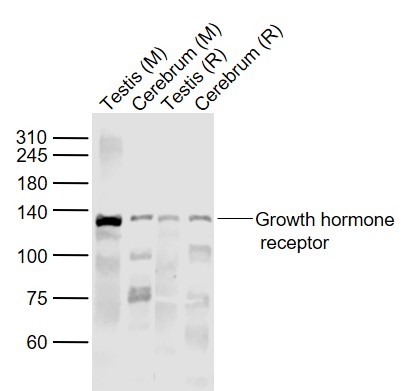
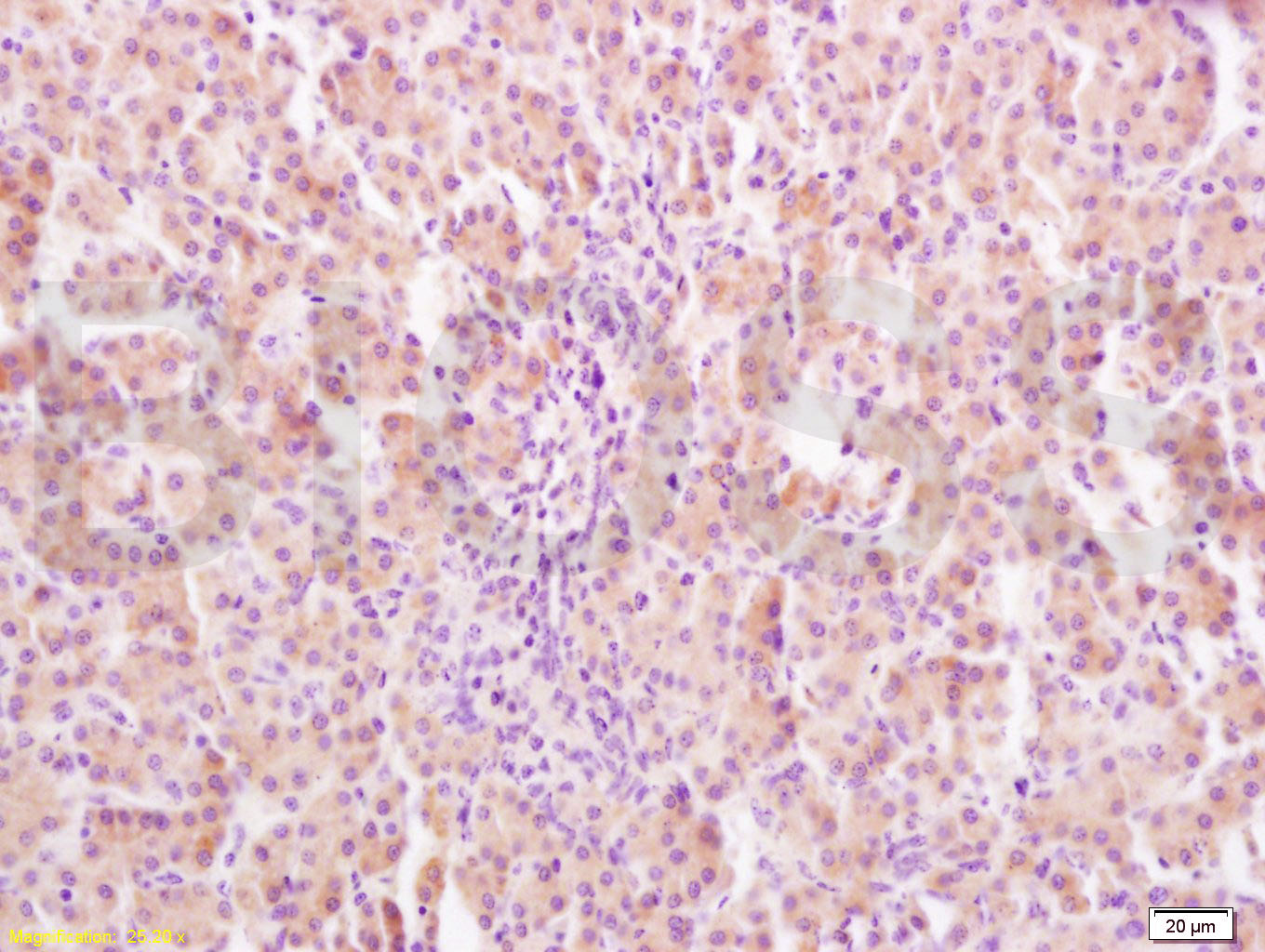
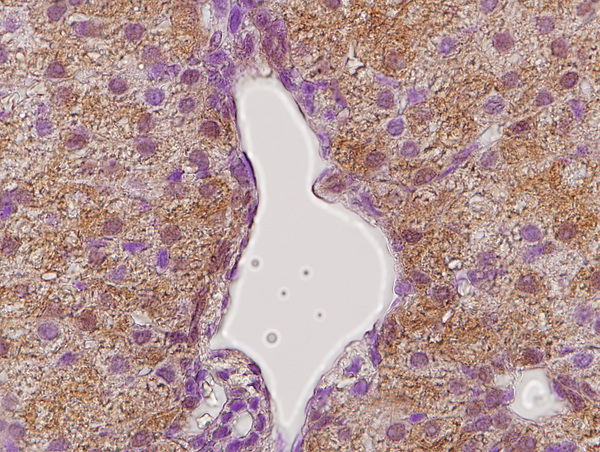
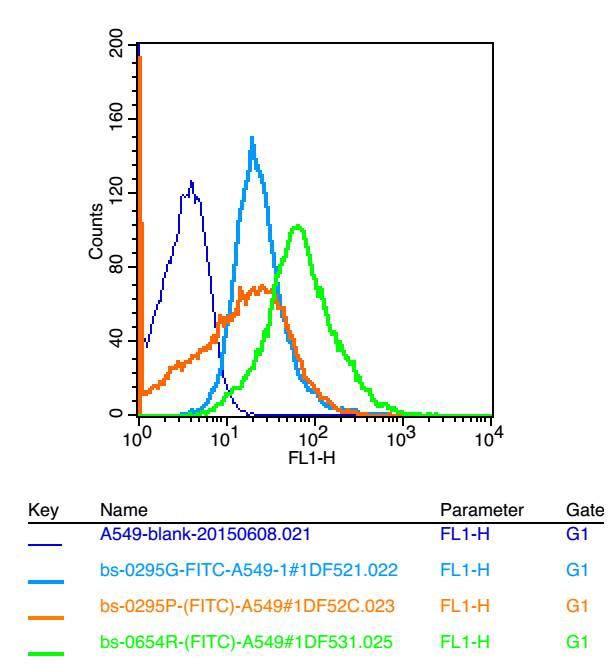
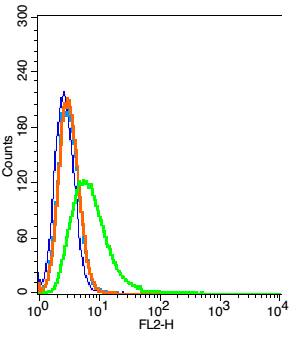


 +86 571 56623320
+86 571 56623320
 +86 18668110335
+86 18668110335

